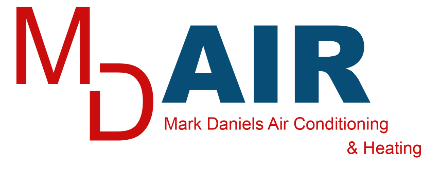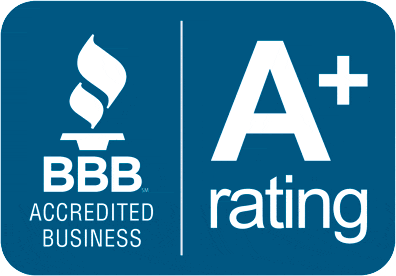Licensed | Bonded | Insured
AC Troubleshooting Tips To Try If Your AC Isn’t Working
Nothing feels better during hot weather than the solace of a house that stays nice and cool. It can be easy to take good AC for granted until it stops working properly.
AC troubleshooting is a great way to keep your house cool while saving yourself a ton of money you’d otherwise spend on hiring a repairman. Keeping your AC unit running properly doesn’t have to be labor-intensive or expensive. Knowing a few helpful tips can keep your energy bill down and keep your AC unit running at maximum efficiency.
Let’s take a look at a few of these important tips.
AC Troubleshooting Tips To Try If Your AC Isn’t Working
If your AC is acting up, sometimes a little AC troubleshooting can help you figure out what the problem is. Here are some tips to help you do just that!
Check the Circuit Breaker
This might seem obvious, but if you’re AC isn’t working, check to see whether the circuit breaker has been tripped. Open your breaker box panel and reset any breakers that have been tripped. Just keep in mind that breakers trip for a reason, and if the same breakers trip repeatedly, consider calling an electrician.
If all the breakers look fine, it’s possible you’ve lost power to the house, or even the entire neighborhood could be experiencing a temporary power disruption. If this is the case, you should immediately place a call to your local energy provider to report the outage.
Check the Filter
One of the most common reasons for an AC unit to stop cooling properly is a dirty filter. A clogged filter prevents proper airflow within the AC unit, which means that cool air won’t be able to reach your vents to cool the house.
Replacing your filter with a new clean one is a cheap, easy way to keep your unit running efficiently. Simply turn the power off to your unit, replace the old filter with a new one, and then let the unit cool down for a couple hours before turning the power back on.
A dirty filter will cause your unit to work harder, making your energy costs go up. So making it a point to change your filter on a regular basis is a quick and simple way to keep cooling costs down during hot summer months.
See if the Thermostat is Broken
When AC troubleshooting, we recommend taking a few minutes to check your thermostat. It’s possible your thermostat display is malfunctioning.
Checking to see that it is functioning properly is typically a simple matter of taking out a few screws and removing the front plate. Sometimes dirt or debris can cause problems, so consider gently blowing it out with compressed air. It’s also possible the batteries need to be replaced with new ones.
If there appear to be loose or broken wires, go ahead and make a trip to your local hardware store to pick up a new thermostat.
Check the Fan Options
When your home isn’t cooling properly, consider taking a look at the fan settings on your AC unit. Fans typically have high, medium and low settings. Depending on the outside temperature and humidity levels, selecting the proper setting can make a big impact on how effectively the unit operates.
For example, during periods of high humidity, the low setting will be more efficient. This is because it circulates the air more slowly, steadily moving the humid air through the unit.
Check the AC Drain Line
Take a look at the pan under your AC unit. If there’s water in the pan, this could be a red flag that the drain is plugged. Getting the unit up and running properly could be a simple matter of emptying the water from the pan and flushing out the drain line.
Use Energy-Saver Options
Unlike older technology, new units offer more efficient ways of cooling your home. If your home is equipped with a newer unit, there should be buttons labeled with terms like “energy saver,” “auto,” or “smart fan.” We recommend that you experiment with these various settings to see what works best for you.
Adjust the Vents Inside Your House
Believe it or not, taking a few minutes to walk through the rooms of your house and inspect your vents can make a significant impact on how effectively air circulates.
Make sure to point them toward the center of the room to direct the air outward. Remember, when the airflow is directed into your curtains or at the back of a couch or other furniture, all of the cool air is being blocked and wasted.
Using a Timer
Using a timer allows you to set it and forget it. When you plan to not be home all day, it’s a waste of money and energy to keep the thermostat set too high. After all, there’s nobody home to enjoy it.
Setting a timer on the thermostat is a great, money-saving solution. If you are leaving in the morning and not planning to return until the middle of the evening, for example, set the timer so that your AC runs a limited amount of time during the hours you will be away.
If you have pets that stay home while you’re away, you will obviously want to run the AC more than if the house was going to be unoccupied.
Keeping Your House Cool
If you notice your house isn’t staying as cool as usual, don’t just lower the dial at the thermostat, because the rise in heat in your home might not be just a result of rising temperatures outside. There could be other issues, some more serious than others.
You don’t have to be a genius to learn basic AC troubleshooting. Remember, arming yourself with these tips and performing a little preventative maintenance can add years to the life of your AC unit, keep your energy costs low, and keep your house cool all summer long.
Looking for reliable air conditioning repair in Apache Junction AZ? The HVAC experts at Mark Daniels Air Conditioning & Heating are dedicated to providing exceptional air conditioning replacement and repair services. If your AC isn’t working properly, get in touch with us today!
Contact Us today!



